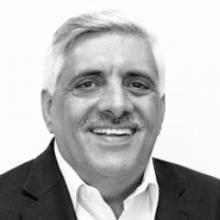You are here
King’s important role in renovating Jerusalem’s holy grave
Mar 22,2017 - Last updated at Mar 22,2017
For centuries, historic Christian churches have been unable to agree on a way to refurbish and restore the Church of the Holy Sepulchre in Jerusalem. This week will witness the unveiling of the most sensitive portion of this restoration.
Historians and church leaders say the holy grave, where Christians believe Jesus was buried and rose again, has not been opened for 200 years.
The reportedly $3.4 million cost of restoration received a personal contribution from His Majesty King Abdullah. But more important was the role the King played in bringing the church leaders together to agree on the restoration.
Palestinian President Mahmoud Abbas also made a contribution towards the restoration effort.
The World Monuments Fund, a New York-based not-for-profit organisation, also raised funds for the project.
Bonnie Burnham, who headed the fund until 2015, when she retired, told UPI that this restoration was critical to save the site.
“I would venture to say that if this intervention hadn’t happened now, there was a very great risk that there could have been a collapse,” she said.
The site is a cave which lies beneath a shrine called Edicule, which itself is surrounded by the 12-century Church of the Holy Sepulchre in the Christian Quarter of Jerusalem’s Old City.
The restoration included cleaning and reinforcing the limestone and marble of the Edicule and the removal of an iron cage installed in 1947 to shore up its walls. The shrine was restored once before, in 1810, after a fire in 1808, and has not been improved since.
The project was led by the National Technical University of Athens. It was declared complete on Monday this week.
A report from Jerusalem says that the restoration team removed hundreds of years of candle soot, as well as marble slabs placed over a stone bench where believers say Jesus’ body was placed after his crucifixion and death.
One such marble layer was installed in the 4th century when emperor Constantine first built the church; another was from the late-Crusader era, in the 14th century. The layers of marble were put back in place.
A small window was cut into a wall so visitors can see the burial place.
The divisions over the Church of the Holy Sepulchre go back tens of centuries.
Different Christian denominations were unable to find common ground between them, so the church’s keys were deposited with leading Muslim families in Jerusalem.
The Nusseibeh and Jodeh families have been responsible for opening and closing the Church every day for decades.
The Status Quo Agreement was codified by way of a faraman (decree) by Ottoman Sultan Osman III in the 18th century. The document continues to be accepted by all the churches and governing powers as the agreed-to reference.
The role of the King in bringing the church leaders together was made easier when King Abdullah and Abbas signed a special agreement, in April 2013, which reaffirmed Jordan’s custodianship of Islamic as well as Christian holy sites in Jerusalem.
The agreement at the same time confirms Palestinian sovereignty in Jerusalem as the capital of the Palestinian state.
Jordan, which signed a peace treaty with Israel in 1994, has administered the Muslim holy sites in Jerusalem since 1967 through the waqf ministry of religious affairs.
Jordan’s role in deciding the permanent future of Jerusalem is confirmed in clause 19 of the Jordan-Israel peace agreement.
King Abdullah’s custodianship of Christian sites made it possible for him to bring together all relevant parties, led by the Orthodox Patriarch Theophilos III as well as the Catholic custodian of the Holy Places and the Armenian Patriarch.
This is a courageous and visible sign confirming Muslim Christian mutual respect.
The fact that this happened after 200 years of impasse means that no matter how entrenched the parties are in their position, they can solve all conflicts.
King Abdullah’s successful spearheading of the restoration of the holy grave should be an impetus for further efforts to bring various conflicting groups together in Palestine and Israel.













